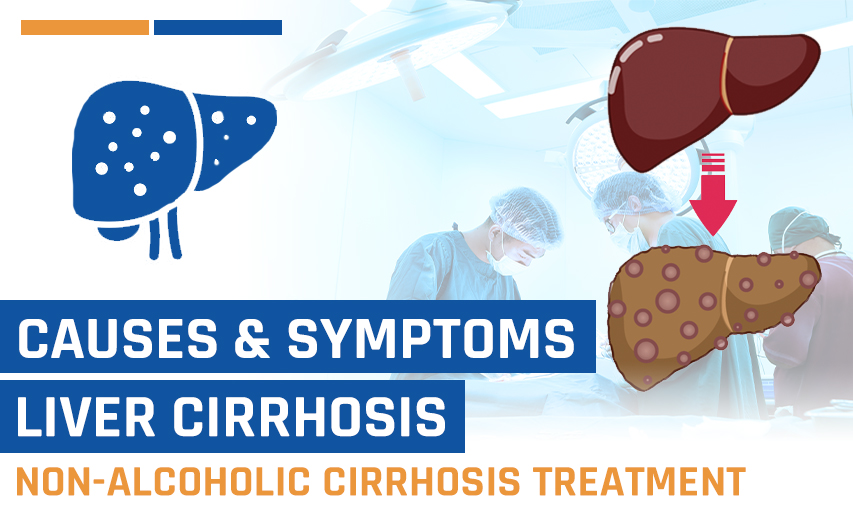What are the Factors for Sickle Cell Anaemia and Their Inheritance?
Sickle cell anemia is a genetic disorder that remains present in red blood cells. It occurs in sickle or crescent shapes and causes blockade formation in blood tracks, giving rise to severe pain, organ damage, and other severe complications. Although often misunderstood or unknown to many, it is more commonly found among patients from Africa, the Middle East, the Mediterranean, and India. Sickle cell anaemia is also one of the most common inherited genetic disorders, and while it affects people worldwide-including in Russia many patients prefer advanced treatment in India. India has become famous for its specialised healthcare system, which offers advanced treatment options for conditions like sickle cell anaemia.
Understanding the inheritance of sickle cell anaemia itself is crucial to understanding its frequency in the population. It is an autosomal recessively inherited disease. This means that the child with the disorder has to inherit two sickling genes, and so each must be contributed by a parent to the offspring to manifest itself. If only one defective sickle cell anemia gene is inherited, the patient is considered a carrier (also known as having sickle cell trait). Carriers are typically asymptomatic but can pass the gene to their offspring. A clear understanding of this sickle cell inheritance pattern is vital for effective genetic counselling and the proper sickle cell anemia treatment. Let’s then understand the inheritance of sickle cell anemia and genetic factors.
How is Sickle Cell Anemia Inherited?
The disorder of genetic sickle cell anemia follows Mendelian ways of inheritance.
The HBB gene, positioned at 16p12.4, is responsible for encoding haemoglobin. It is the mutation in this gene that leads to the formation of abnormal haemoglobin S, making the red blood cells bend like sickles.
For a baby to be affected by sickle cell anaemia, both parents must be carriers of the sickle cell anemia gene.
If both parents have the sickle cell trait, a 25% probability exists that the sickle cell anemia is inherited with two defective genes in a child.
A child stands a 50% chance of inheriting one defective gene and becoming a carrier, while a 25% chance endures for the child to inherit a normal haemoglobin gene from both parents, thus being left untouched.
It is thus quite clear that the Sickle Cell inheritance pattern follows a simple mathematical probability.
What is the Genetic Mutation of Sickle Cell Anemia?
Sickle cell anemia genetics and variations in the HBB gene influence the severity and symptoms of sickle cell anaemia. Two sickle cell anemia genes are primarily responsible for this disease, but some genetic responses intensify it. For instance, a person with co-inherited alpha-thalassaemia endures milder symptoms. The inheritance of sickle cell anemia is not solely dependent on having the sickle cell gene; rather, it can be slightly modified by some additional genetic variances, which elicit a change in haemoglobin production and function.
What are the Risk Factors Associated with Sickle Cell Anemia?
Several instances increase the severity and occurrence of complications in sickle cell anaemia; these consist of the following:
- Genetics: A family history of the disorder raises the risk of inheriting sickle cell anaemia, particularly if both parents carry the sickle cell gene.
- Ethnicity: The condition is most common among patients of African descent, but it also occurs in those with Mediterranean, Middle Eastern, or Indian ancestry, where the sickle cell gene is more prevalent.
- Environmental issues: A challenging environment, existing in temperature changes, high altitudes, or dehydration, can provoke a sickle cell crisis by promoting red blood cell sickling.
- Infection: Those with sickle cell anaemia are susceptible to bacterial infections, which can lead to life-threatening complications like pneumonia.
- Stress and Physical Activity: Frequent and severe painful episodes occur with unnecessary exertion and emotional turmoil, especially when the body is pushed beyond its limits.
Having identified these risk factors, patients should take preventive measures in order to manage their condition better.
What are the Symptoms of Sickle Cell Anemia?
The inheritance of sickle cell anemia results in a broad range of symptoms and complications. One of the most common symptoms of sickle cell anemia is the sickle cell crisis, which is a condition where blocked blood flow causes episodes of intense pain. Other complications include chronic anaemia, delayed growth and development, a higher susceptibility to infections, stroke, and damage to vital organs such as the lungs, kidneys, and heart. The severity of symptoms varies from person to person and depends on both genetic factors and personal health conditions. Depending on the severity, a treatment plan is identified.
What is the Best Sickle Cell Anemia Treatment Option?
While there is currently no universal cure for sickle cell anemia, the condition can be managed through a combination of sickle cell anemia treatment methods that can help control its symptoms and prevent complications.
■ Medications: One of the most commonly used drugs for the management of sickle cell anaemia is hydroxyurea, which increases the production of foetal haemoglobin. This process helps reduce the frequency of sickle cell crises and improves the overall blood flow.
■ Blood Transfusions: Regular blood transfusions can help maintain normal haemoglobin levels and reduce the risk of complications such as stroke and severe anaemia. They are especially useful in managing acute events and preventing organ damage.
■ Bone Marrow Transplantation: Though complex and requiring a well-matched donor, bone marrow transplants provide a glimmer of hope in the treatment of the disease by replacing the defective blood-forming cells with healthy ones from a donor. This treatment is most successful in younger patients and those with severe symptoms.
■ Gene Therapy: Gene therapy is an emerging treatment approach that targets the root cause of the sickle cell anaemia disease by correcting a mutation in the HBB gene, which is responsible for producing abnormal haemoglobin. Advanced techniques like gene editing (e.g., CRISPR) are being used to insert corrected genetic material and offer a potential long-term solution to the disease.
Why Get Sickle Cell Anemia Treatment in India?
In Russia, the clinical management of sickle cell anaemia remains relatively limited, thereby prompting patients to look for treatment abroad. India is one of the leading countries for getting sickle cell anemia treatment with its medical expertise, advanced treatment options, and cost-effective healthcare.
India provides comprehensive sickle cell anemia treatment care through its well-seasoned haematologists and world-class medical facilities. Key treatment options available include:
■ Bone Marrow Transplantation: A potential cure for sickle cell anaemia, this procedure replaces defective stem cells with healthy ones from a compatible donor, and shows high success rates in Indian hospitals.
■ Gene Therapy: Gene therapy is a rising technique that aims to repair the genetic mutation behind this disease.
■ Hydroxyurea Therapy: Widely used in India, hydroxyurea increases foetal haemoglobin levels, which reduces the frequency and severity of painful episodes and improves the patients' quality of life.
India's growing reputation in the field of haematology, combined with affordable treatment costs, makes it one of the most accessible options for international patients. With its growing healthcare infrastructure, India offers long-term specialised management for patients living with sickle cell anaemia.
Bottom Line: Why is it Important to Understand the Inheritance of Sickle Cell Anemia Disease?
Sickle Cell Anaemia is a severe genetic disorder influenced by the hereditary Sickle Cell Anemia from parents who are carriers of the defective gene. This disease causes high pressure on healthcare, and with the sciences of medical advancement, treatments and management have drastically gone through various milestones. India is the preferred destination for many Russian patients needing sickle cell anemia treatment for their genetic disorders. The sickle-cell-loaded person can expect to lead a healthy life and avoid further complications with appropriate medical care and an understanding of the genetics behind sickle cell inheritance.




















Be First To Comment
Leave a Comment